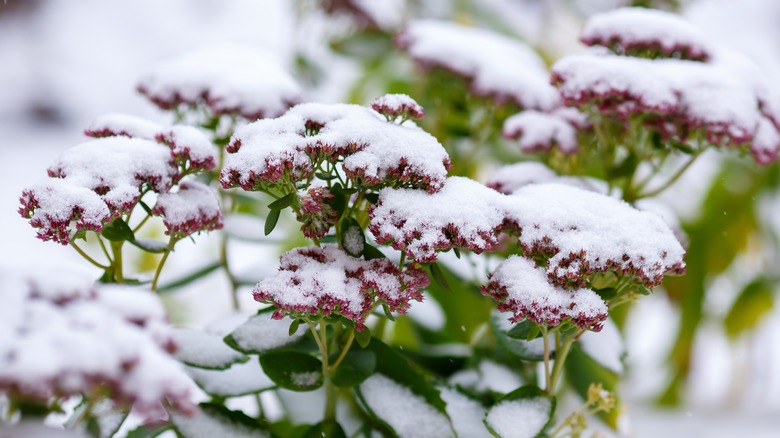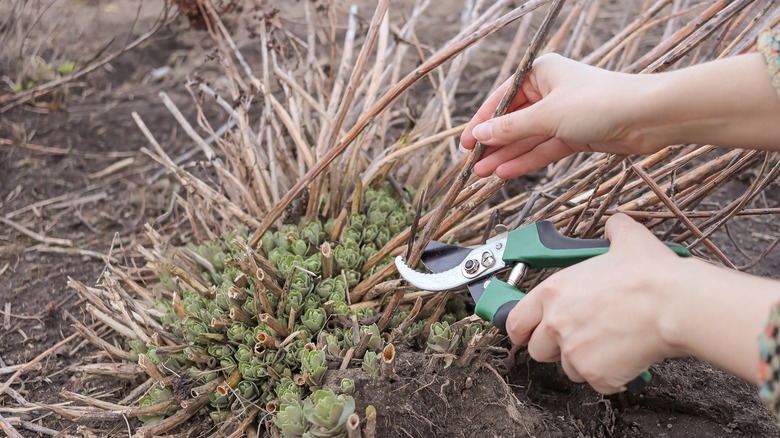Sedum Ground Cover Winter Care Tips To Protect Your Plants
We may receive a commission on purchases made from links.
As autumn settles in and most blooms fade, sedum —also known as stonecrop — steps into the spotlight, adding vibrant color and texture to gardens just when they need it most—and with a few simple winter care tips, you can ensure these hardy ground covers return for an encore next year. Known as "the ultimate low-maintenance" plant, sedums bloom late in the fall and can attract pollinators to your garden later in the year. Sedums are also succulents, which means they are one of the most drought-tolerant plants. Despite being easy to care for, though, sedum still needs help to get through the winter. It's important to keep it moist — but not wet — and cut back the dead stalks either at the beginning or end of the winter season to clear the way for new growth. Then, you'll have a beautiful ground cover to fill your garden with color all year long.
With hundreds of species, there are many cultivars and hybrids, so ensure you take some time to learn about the varieties of sedum ground cover. Some popular sedums, such as 'Brilliant' and 'Autumn Joy' are beautiful, drought-tolerant ground covers that turn deep pink in the fall that make stunning additions to your garden. On the other hand, be careful when choosing your sedum. Some, such as Goldmoss Stonecrop (Sedum acre), Mossy Stonecrop (Sedum acre L.), and White Stonecrop (Sedum album), are not native to the U.S. and are considered weedy, so they're best avoided.
Winter pruning for sedum ground covers
As cold weather arrives, you may be wondering what — if anything — you need to do to help your sedum through the winter. Sedum begins to die after the first frost, but it's up to you if you want to prune it back or leave it. The flowers remain colorful, and the seeds attract birds to your yard throughout the winter, providing something to watch out your windows on cold days. If you decide to prune it, cut it back with sharp pruners, such as Fiskars Bypass Pruning Shears, at the ground level. It will grow back normally in the spring. Also, it's important to stop watering sedum as soon as it starts dying back and begins entering its period of dormancy — unless you're having a really dry winter. Too much water during the winter could introduce problems such as root rot. Taking these steps will help your sedum overwinter successfully.
If you did allow your sedum stalks to stay in your garden all winter long, when the weather begins to warm up, you'll need to do a little prep work for the growing season. Watch your sedum to see when the buds start to emerge, then trim the dead stalks at ground level near the low clump of emerging buds. After this, your plants will be ready for another season of growth. To fill your garden with color all year long, consider these plants and flowers to grow near sedum ground cover.

